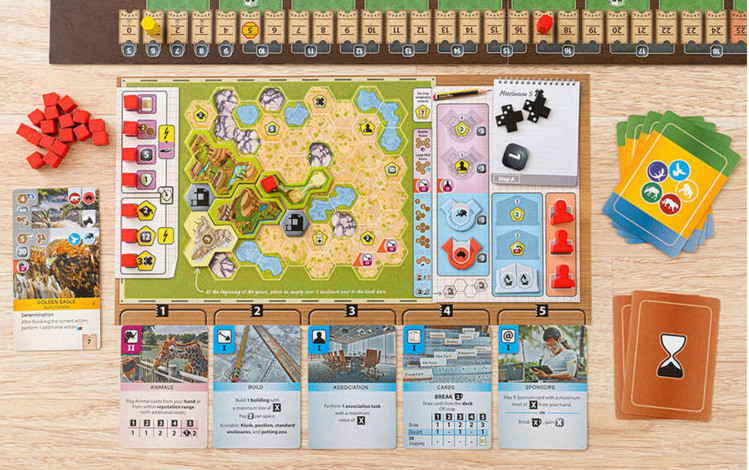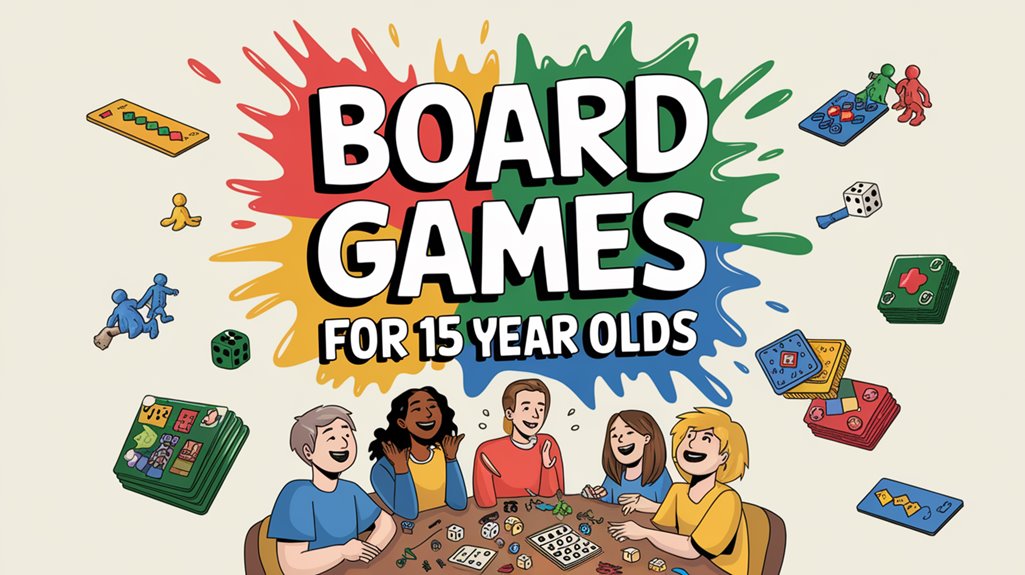Ark Nova’s emergence in the board game market represents a significant addition to the tableau-building genre. The game combines zoo management with conservation efforts through its dual-track scoring system. Players navigate complex card-driven decisions while managing limited actions in a race to cross scoring tracks. The asymmetrical starting conditions and variable card draws guarantee no two games unfold in the same way. This strategic depth, coupled with the tension between immediate appeal and long-term conservation goals, creates a gaming experience worthy of closer examination.
Key Takeaways
- Ark Nova combines accessible mechanics with remarkable strategic depth through its dual-track scoring system.
- The game features 255 unique cards that create diverse gameplay experiences and strategic paths.
- Five distinct actions (Cards, Build, Animals, Sponsors, Association) form an engaging action selection system.
- Dynamic round structure eliminates traditional turn-passing, keeping all players continuously engaged.
- Player interaction occurs through competitive card displays, shared opportunities, and strategic timing during the Break phase.
Game Overview and Components
While many recent board games rely on flashy gimmicks or digital integration, Ark Nova presents a meticulously crafted analog experience centered on strategic zoo development. This 1-4 player game delivers a tactical ecosystem where participants construct and optimize their zoological parks across 90-150 minutes of gameplay.
The component array is substantial yet functional: 255 cards representing animals, sponsors, and conservation projects form the strategic core, while hexagonal enclosure tiles provide the spatial puzzle element. Each player works with a double-sided personal zoo board, allowing for variable starting conditions and divergent build paths. The included token trays demonstrate thoughtful design implementation, minimizing setup friction and maximizing table efficiency. This component suite creates a robust framework where players can implement their conservation vision through calculated card play and action selection until game end.

Core Mechanics and Gameplay Flow
Ark Nova orchestrates its strategic depth through a brilliantly interconnected action selection system that forms the game’s mechanical backbone. Players navigate five distinct actions—Cards, Build, Animals, Sponsors, and Association—with effectiveness determined by each action card’s board position. This dynamic system rewards tactical flexibility while implementing constraints through hand size limitations.
The game’s innovative scoring mechanism pits Appeal against Conservation Points on separate tracks, creating tension as players build their zoo while pursuing conservation goals. When these tracks intersect, the game concludes—a brilliant race mechanism that forces strategic balance.
Player interaction emerges organically through the Break phase, which refreshes game elements and provides additional action opportunities. This creates a fluid, open-ended round structure without traditional turn-passing, allowing strategic players to capitalize on timing advantages while managing the action card system.
Strategic Depth and Player Choices
In spite of its accessible framework, Ark Nova offers a decision space of remarkable complexity, requiring players to navigate interconnected strategic pathways with careful consideration. The flexible action system constrains players to select only one action per turn, creating tension between immediate needs and strategic planning for future rounds.
The dual-track scoring mechanism forms the game’s strategic fulcrum, challenging players to balance Appeal and Conservation tracks while efficiently managing resources. By flipping action cards, players unlock powerful combos that can dramatically accelerate their zoo’s development. This combines with 255 unique cards to encourage diverse gameplay experiences with multiple viable paths to victory.
The Break phase introduces critical strategic dilemmas, forcing players to assess when and how the game ends while positioning themselves for ideal scoring position against opponents.
Theme Integration and Visual Design
Beyond the strategic complexity that drives Ark Nova, the game’s thematic integration and visual presentation form a unified package that supports its gameplay mechanisms. The vibrant wildlife photography adorning each card establishes an authentic connection to real-world conservation efforts, while double-sided main boards facilitate diverse gameplay experiences through variable card orientations.
The tactile dimension of zoo-building materializes through hexagonal components that physically represent enclosures and facilities, reinforcing spatial management considerations. Nevertheless, the iconography presents a potential barrier; in spite of its clean design, new players may struggle with symbol interpretation, temporarily disrupting immersion. This visual learning curve notwithstanding, Ark Nova successfully marries mechanics with theme by challenging players to balance visitor appeal with conservation initiatives—mirroring the actual dilemmas faced by modern zoological institutions.
Player Interaction and Multiplayer Dynamics
While Ark Nova appears superficially as a typical tableau-builder, its competitive card displays and shared opportunities generate significant inter-player tension. The break system forces players to constantly reassess tactical priorities as the availability of essential cards shifts with each opponent’s move. Conservation projects and special-ability cards further deepen player interaction, creating decision points where anticipating opponents’ strategies becomes as vital as executing one’s own development plans.
Strategic Competition Elements
Strategic competition infuses Ark Nova’s design, elevating it beyond a simple race for points into a subtle multiplayer ecosystem. The game creates a constant push and pull where one player’s action allows opportunities for others to respond tactically. When players advance score markers through conservation projects, they’re directly competing for limited rewards in a zero-sum environment.
- The break track system affects all simultaneously, creating pivotal moments where timing optimization can disrupt opponents’ plans
- Competitive card displays force adaptive strategy, where claiming high-value play cards denies them to rivals
- End-game scoring conditions provide transparency that facilitates strategic competition through deliberate acceleration or delay
This player interaction creates a dynamic tension throughout, making Ark Nova’s strategic depth emerge from the constant positioning and repositioning as players negotiate the complex ecosystem of options before them.
Shared Resources Management
Ark Nova orchestrates a delicate ecosystem of shared resources that amplifies player interaction through multiple competitive touchpoints. The strategic card displays function as contested territories where players must anticipate opponents’ intentions while pursuing their own objectives, creating tension in every selection.
The Break phase introduces collective opportunities that affect all participants simultaneously, forcing strategic decision-making that considers the multiplayer dynamics at play. Conservation projects serve as limited resources that players vie for, creating a natural competitive framework while advancing position on the conservation track.
The action card system facilitates responsive gameplay where players adapt their strategies based on others’ moves. Even the solo mode maintains this ecosystem by simulating the resource competition fundamental to Ark Nova’s design, preserving the game’s strategic depth while removing direct player interaction.



